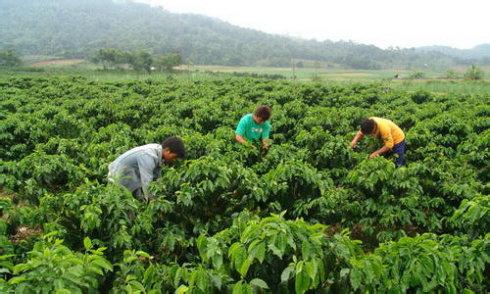Numerical value of roughness and fineness of ground beans with automatic coffee machine
Numerical value of roughness and fineness of ground beans with automatic coffee machine
There are many other factors that affect the degree of grinding, including the roasting degree of coffee beans (although coffee beans used by Espresso should use a deeper roasting degree, but sometimes different roasting degrees may be used to roast formula beans for richer taste), blended recipes, and so on. All of the above are the most common and can be mastered by baristas. The previous sections are all about the adjustment of the basic factors in the production process in order to meet that taste standard on the premise of understanding the good taste of Espresso (see the taste of Espresso).
There are many places in the world of Espresso that we don't fully understand, and we would like to explore this wonderful world of coffee with you.
Coarse granularity: about the size of planed sawdust, similar to flaky particles, suitable for filter pots, can also be placed in tea bags, placed in pots and brewed with hot water.
Medium granularity: about the size of coarse sugar, suitable for hand filter cup and hand filter cloth. Medium fineness: about the size of No. 2 sugar, suitable for electric coffee maker, siphon and mocha pot.
Fine granularity: about the size of quicksand on the beach, suitable for Italian coffee maker and water drop iced coffee. Finest granularity: about the size of too white powder, suitable for use in Turkish pots.

Important Notice :
前街咖啡 FrontStreet Coffee has moved to new addredd:
FrontStreet Coffee Address: 315,Donghua East Road,GuangZhou
Tel:020 38364473
- Prev

Flavor description of Brazilian Yellow bourbon Coffee Regional varieties produced by taste treatment
Taste description of Brazilian Yellow bourbon Coffee after 2000, because of the coffee competition, the quality of coffee beans produced in the high altitude areas of the south was appreciated, mainly by the farms around the Minas high platform, and the coffee quality was also the largest among Brazilian beans, such as Sirado in the west of Minas and Matas in the east, Bashiya in the north or small farmers in the south.
- Next

A brief introduction to the Flavor description of thick and thin Coffee in Delong Coffee Machine
Delong coffee machine how to adjust the flavor of thick and thin coffee description characteristics of different utensils, even the same vessel different coffee beans, need to grind coffee beans to a specific thickness. For all kinds of coffee extraction methods, whether the grinding degree is appropriate or not can directly determine its success or failure. The grinding of coffee beans seems complicated, but in fact there are rules to follow.
Related
- What is the Philharmonic pressure? How to use Philharmonic pressure to make delicious coffee
- Why does a hand grinder have more fine powder than an electric grinder?
- In addition to the hot mom, what is the difference between the versions of EK43 | ditting and Mahdi ek43?
- What kind of equipment do you need to make coffee by hand? Introduction to novice starter cooking equipment tools
- Espresso needs to be ground how thick and thin scale entry Italian Coffee Machine Bean Grinder investigation and Grinding course
- How much does it cost to open a small private cafe? How much does it cost to learn coffee? How to operate it?
- The difference between the flavor characteristics of hand-brewed coffee and coffee maker is hand-brewed coffee really better than coffee maker? Can I use a coffee machine to make coffee beans by hand?
- The difference between 01 and 02 of hario v60 filter cup what is the difference between 01 and 02 filter cup opening and cooking flavor
- What's the difference between the smart cup and the French kettle? Which is better, the French kettle or the Smart Cup?
- What's the difference between a smart cup and a V60 filter cup? The difference between the taste of smart cup and hand-brewed coffee

